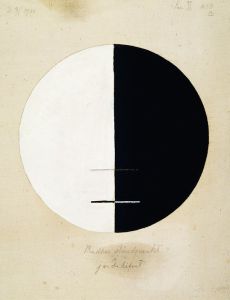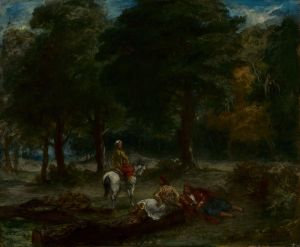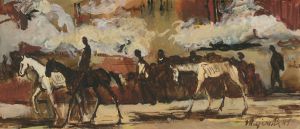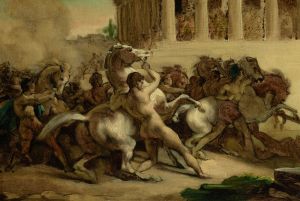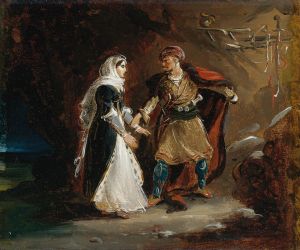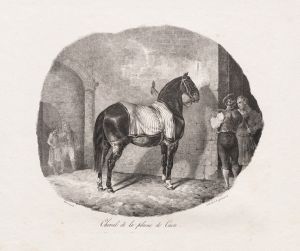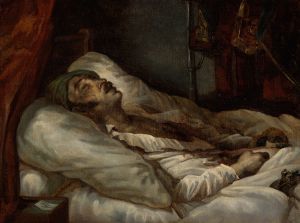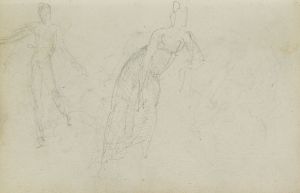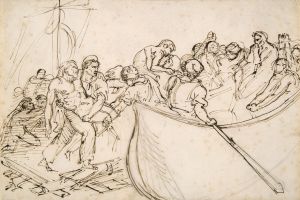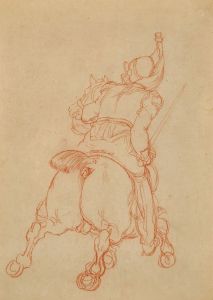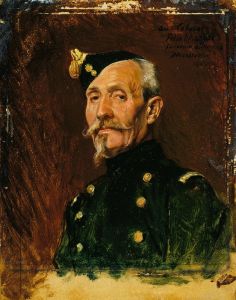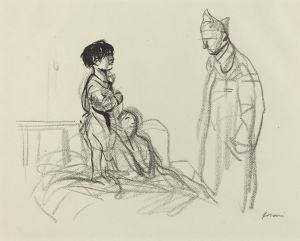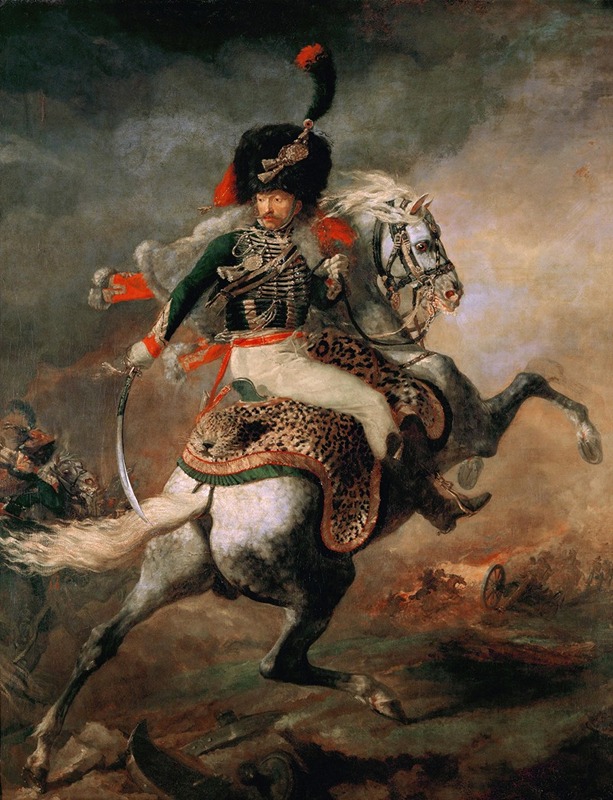
The Charging Chasseur
A hand-painted replica of Théodore Géricault’s masterpiece The Charging Chasseur, meticulously crafted by professional artists to capture the true essence of the original. Each piece is created with museum-quality canvas and rare mineral pigments, carefully painted by experienced artists with delicate brushstrokes and rich, layered colors to perfectly recreate the texture of the original artwork. Unlike machine-printed reproductions, this hand-painted version brings the painting to life, infused with the artist’s emotions and skill in every stroke. Whether for personal collection or home decoration, it instantly elevates the artistic atmosphere of any space.
"The Charging Chasseur" is an oil painting created by the French artist Théodore Géricault in 1812. This work is one of Géricault's earliest masterpieces and is often considered a significant precursor to the Romantic movement in art. The painting is housed in the Louvre Museum in Paris, France.
Géricault was born in Rouen, France, in 1791 and showed an early interest in art. He moved to Paris to study under prominent artists such as Pierre-Narcisse Guérin. Géricault was heavily influenced by the works of the Old Masters, as well as contemporary artists like Antoine-Jean Gros. His exposure to these influences is evident in "The Charging Chasseur," which combines classical techniques with a dynamic and dramatic composition.
The painting depicts an officer of the Imperial Guard, specifically a chasseur, mounted on a rearing horse. The chasseur is dressed in a green uniform with a red sash, and he holds a saber in his right hand. The horse is portrayed in a moment of intense action, with its front legs raised and its mane flowing, capturing the energy and movement of a cavalry charge. The background is a tumultuous battlefield, suggested by the swirling smoke and indistinct figures, which adds to the sense of urgency and chaos.
"The Charging Chasseur" is notable for its vivid portrayal of motion and emotion, characteristics that would later define the Romantic style. Géricault's use of color and light enhances the drama of the scene, with the bright uniform of the chasseur standing out against the darker, more muted tones of the background. The painting's composition, with its diagonal lines and dynamic forms, draws the viewer's eye across the canvas and emphasizes the forward momentum of the charge.
At the time of its creation, "The Charging Chasseur" was a bold departure from the more restrained and formal compositions typical of Neoclassical art. Géricault's focus on individual heroism and the raw energy of battle was a reflection of the changing attitudes in art and society during the early 19th century. The painting was exhibited at the Paris Salon of 1812, where it received mixed reviews. Some critics praised its vitality and technical skill, while others found it too unconventional.
Despite the initial mixed reception, "The Charging Chasseur" has since been recognized as a pivotal work in the development of Romanticism. Géricault's innovative approach to composition and his emphasis on emotion and movement influenced a generation of artists, including Eugène Delacroix, who would become a leading figure in the Romantic movement.
Géricault continued to explore themes of heroism and human struggle in his later works, most notably in "The Raft of the Medusa," another masterpiece that further established his reputation as a pioneering Romantic artist. "The Charging Chasseur" remains an important example of Géricault's early style and his contribution to the evolution of modern art.






